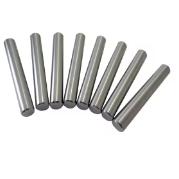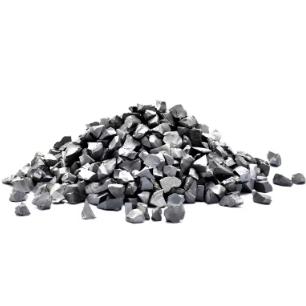**The Impossible Feat: Can Humans Actually Break Metal Plates?**
(Can A Human Break A Metal Plate)
Let’s be honest. We’ve all seen those action movies. The hero grabs a metal plate, maybe a car door or a piece of armor, gives a mighty yell, and bends it like cardboard. It looks cool. It makes us cheer. But hold on. Can a human *really* break a metal plate? Not the flimsy kind you find on a cheap toy, but a solid, proper piece of metal? That’s what we’re diving into today. We’re talking about real metal plates – the tough stuff. Forget the movie magic for a minute. Let’s look at the real world, the science, and the sheer strength of metal plates.
**1. What Exactly is a Metal Plate?**
First things first. What are we talking about when we say “metal plate”? It’s pretty straightforward. A metal plate is a flat sheet made out of metal. Simple. But not all metal plates are the same. Think about the foil wrapper on a chocolate bar. That’s metal. It’s thin. You can crumple it easily. Now think about the steel plates used in building bridges or ships. Those are thick. They’re heavy. They’re strong. For this discussion, we’re focusing on the tough ones. The plates made from metals like steel, aluminum alloys, titanium, or sometimes iron. These are the plates used in important places. Construction sites use them for building frames. Factories use them for machinery bases. Boats and cars rely on them for strength. The key point is their thickness and the type of metal. A typical strong metal plate might be anywhere from a quarter-inch thick to several inches thick. This thickness, combined with the metal’s natural properties, creates a barrier that is incredibly hard to overcome.
**2. Why Breaking a Metal Plate is Nearly Impossible**
So, why is it so hard? Why can’t a strong person just rip one apart? It boils down to physics. Metal plates are incredibly strong because of how the metal is structured. At a tiny level, metal atoms are bonded together very tightly. This creates something called tensile strength. Tensile strength is how much pulling force a material can handle before it breaks. Think of it like trying to stretch a rope until it snaps. Metal plates have very high tensile strength. Steel, for example, can resist forces thousands of times stronger than what a human can exert. Then there’s compressive strength. This is how well a material resists being squashed or pushed together. Metal plates excel here too. Pushing on them just makes them push back harder. Trying to bend them? That requires overcoming their stiffness, known as rigidity. Metals are rigid. They don’t want to bend easily. Even if you manage to bend a thick plate slightly, it will spring back. Breaking it completely? That needs force far beyond human muscle power. It’s like asking someone to lift a mountain with their bare hands. The mountain isn’t going anywhere. Metal plates are built to resist enormous forces. They form the skeletons of buildings and machines for this exact reason. Their job is to stay intact.
**3. How Could It *Potentially* Be Done?**
Okay, “nearly impossible” doesn’t mean absolutely impossible in every single scenario ever. There are ways metal plates *can* be broken, but they involve things way beyond normal human strength. First, massive machinery. Industrial presses use hydraulic power. They generate tons of pressure, literally. These presses can bend, shape, and sometimes even fracture thick metal plates. But this is machine power, not human muscle. Second, extreme heat. Heating metal changes its properties. If you heat a metal plate intensely, like with a powerful cutting torch or in a forge, it becomes softer. It loses some of its strength. While hot, it might be deformed more easily, and if cooled rapidly (quenched), it could become brittle and crack. Again, this isn’t something a person can do with their hands. Third, specialized tools. Cutting tools like plasma cutters or lasers slice through metal plates. They focus immense energy onto a small point. Abrasive tools grind metal away slowly. But these are tools, not fingers. Fourth, repeated stress. If you hit a metal plate in the same spot over and over with a very hard object, you might cause fatigue. Eventually, a crack could start and grow. This is how metal fails over time in structures. It takes sustained, focused effort, often over a long period. Fifth, and this is rare, freak accidents or unique materials. Some metals are more brittle than others. Under very specific and unusual impacts, a plate might fracture. But this is unpredictable. As for humans? Stories exist about incredible feats of strength. Maybe bending a thin bar under perfect leverage. But cleanly breaking a thick, structural metal plate? That’s firmly in the realm of myth and special effects. Trying it yourself is dangerous and likely to result only in injury. Don’t do it.
**4. Applications: Where Metal Plates Shine (Because They Don’t Break)**
The whole point of metal plates is that they *don’t* break easily. That’s why we use them everywhere demanding strength and durability. Think about construction. Metal plates form the skeletons of skyscrapers, bridges, and industrial buildings. They support massive weights and resist wind and earthquakes. In transportation, they are vital. Ships’ hulls are built from thick steel plates to withstand ocean pressures. Armored vehicles use layered metal plates for protection. Car frames incorporate metal plates for safety and structure. Manufacturing relies on metal plates constantly. They become bases for heavy machinery, parts for equipment, molds, and structural components. The energy sector uses them in pipelines, pressure vessels, and power plant structures. Even defense depends on them for armor plating on tanks and personnel carriers. In all these applications, the metal plate’s ability to resist breaking is its superpower. It provides a reliable, long-lasting barrier or support structure. Engineers choose specific metals and thicknesses precisely because they won’t fail under expected loads. The “unbreakable” nature is the feature, not a bug. It’s what makes metal plates indispensable.
**5. FAQs: Your Metal Plate Break Questions Answered**
Let’s tackle some common questions people have about this topic.
* **Can martial artists break metal plates?** Real talk? No. Movies and stage shows often use tricks. Thin, pre-cut metal or special props that look real but aren’t. A genuine, thick steel plate? Breaking it with a hand or foot strike isn’t feasible. The physics just doesn’t work. It would hurt the person a lot more than the plate.
* **What about bending? Can humans bend metal plates?** Bending is different from breaking. Bending a *thin* sheet of softer metal, like aluminum, might be possible with significant force and leverage. Think bodybuilders bending steel bars – often those bars are chosen for their bendability. But bending a thick, structural steel plate? That’s still extremely unlikely without tools or machines. It requires immense force concentrated over a small area.
* **Are some metals easier to break?** Yes, relatively speaking. Cast iron is very hard but also brittle. It can shatter under a strong, sharp impact, unlike steel which is tougher. However, even breaking cast iron usually requires a hammer or other tool, not bare hands. Softer metals like lead bend easily but don’t really “break” cleanly.
* **Could a super strong person do it?** Define “super strong.” Even the world’s strongest humans, capable of lifting incredible weights, exert forces focused through their muscles and bones. Applying that force effectively to *break* a thick metal plate is a different challenge. The leverage needed, the point of impact, and the material’s resistance make it practically impossible. Strength competitions involve lifting or moving objects, not destroying solid metal blocks.
(Can A Human Break A Metal Plate)
* **What about bank vaults or safes? Aren’t those broken into?** Yes, but not by hand! Safecrackers use drills, explosives, cutting torches, or thermal lances. These are powerful tools designed to overcome metal. The vault door itself remains incredibly strong. Breaking it open is a slow, noisy process involving technology, not brute human force against the raw plate. The metal plate does its job well.
Inquiry us
if you want to want to know more, please feel free to contact us.


